La Salud
Principal researcher: Olivia Rivero
The group of open-air rock representations at La Salud, discovered in 2013, was studied by a research team led by D. Garate and M. Santonja (Garate et al. 2016). Subsequently, in 2018, a new representation was discovered and studied by our director, Olivia Rivero, together with Julián Bécares and Esteban Álvarez, lecturer at the University of Salamanca. This site is located on both banks of the Tormes River, very close to the city of Salamanca, and improves and completes the studies on this type of artistic manifestation so common in the Meseta and establishes its link with Portuguese open-air ensembles such as those of Foz Côa.
During the first period of research, a survey was carried out throughout the area likely to have rock art representations. It was already known that Acheulean industries had appeared on the terraces of the Tormes river within the municipality of Salamanca, although, to date, it has not been possible to establish the existence of any site belonging to the Upper Palaeolithic. The survey resulted in the discovery of three decorated panels, all on slate materials of grey, black or purplish colours, and very affected by schist and the presence of lichens, which in some cases prevent the engravings from being clearly visible.
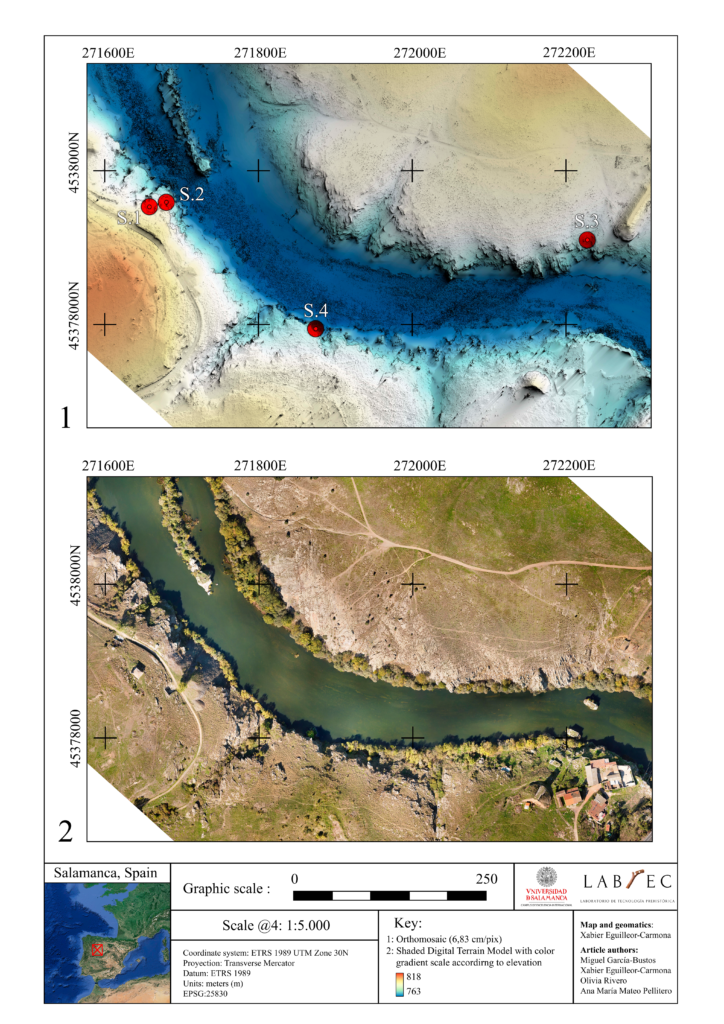
Among the themes represented, the presence of four zoomorphs (two horses, a possible goat and a cervical dorsal line) is worth mentioning, as well as various non-figurative representations, most of them made using the piqueteadopicketing technique. The use of this technique relates La Salud record to other open-air assemblages located on the Meseta, such as Siega Verde or various sites in the Côa Valley (Portugal).
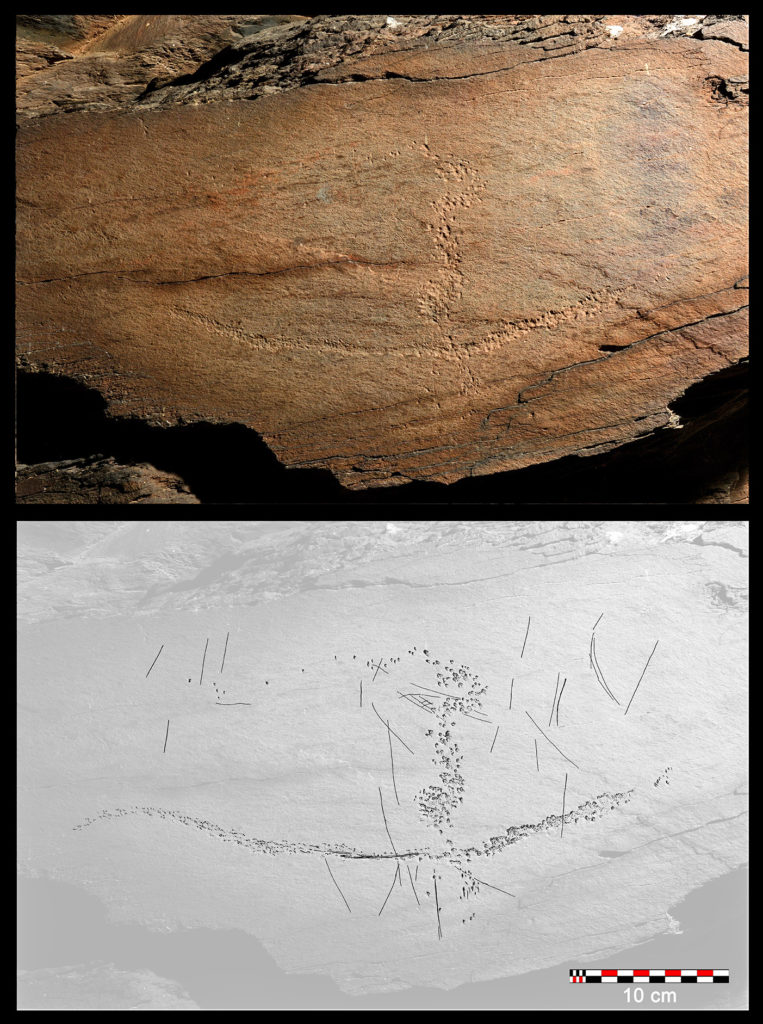
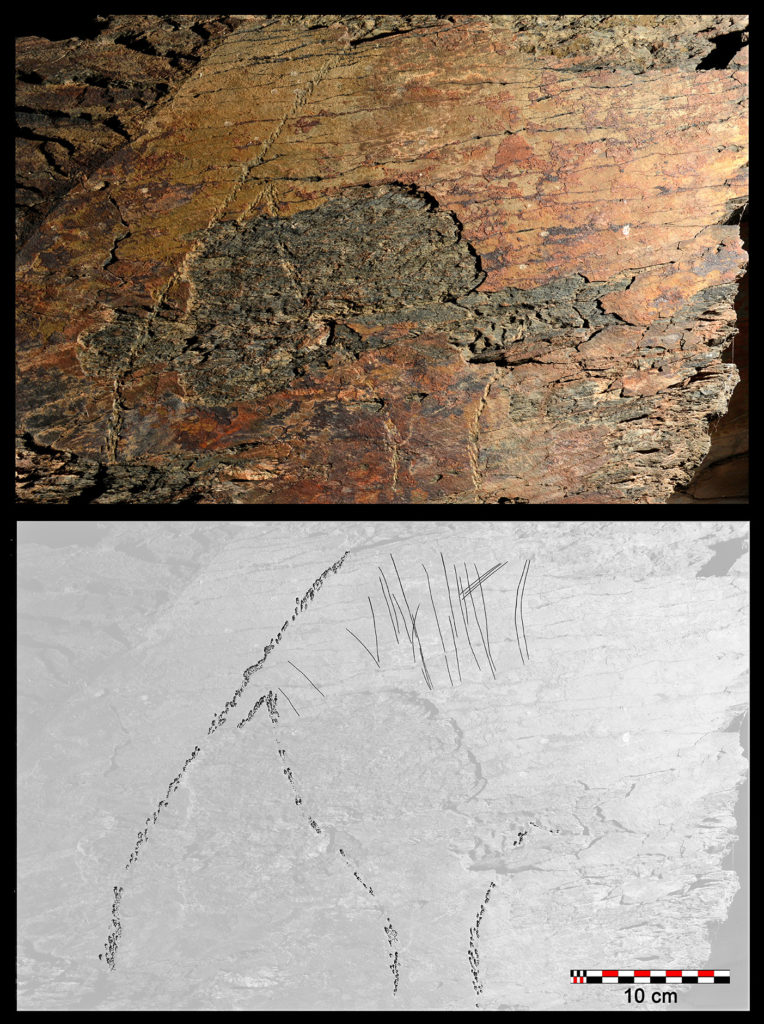 Photograph and tracing of motifs S.2.1 (left) and S.2.2 (right) (Image: (Garate et al. 2016).
Photograph and tracing of motifs S.2.1 (left) and S.2.2 (right) (Image: (Garate et al. 2016).
En cuanto al último descubrimiento, se sitúa en la margen izquierda del río Tormes, en un abrigo compuesto por una superficie central, dos salientes laterales y una pequeña visera, con el mismo soporte de pizarra que en los casos anteriores. Aquí se han identificado tres representaciones de équidos, realizados mediante piqueteado. Dos de ellos configuran un caballo bicéfalo orientado a la derecha, con una de las cabezas en posición erguida y otra más agachada, representando el movimiento del caballo. La tercera representación se compone de una línea cérvico dorsal situada a la derecha del caballo bicéfalo.
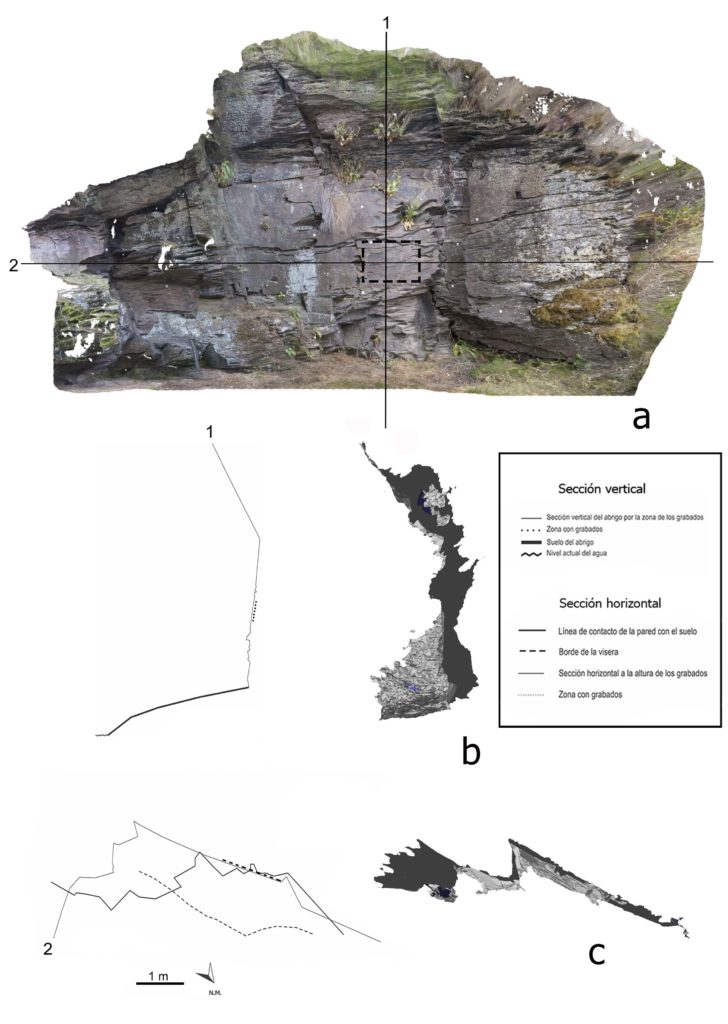
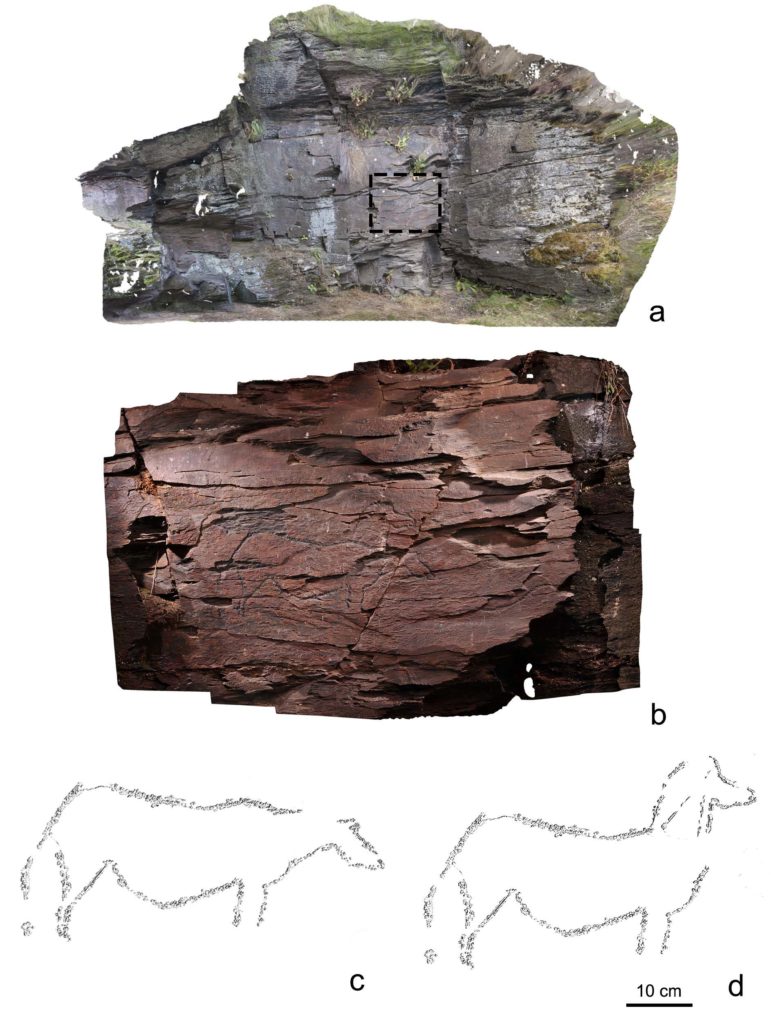 Elevation and plan of the La Salud shelter (left); Photogrammetric model of the panel with the tracing of the two-headed horse (right).
Elevation and plan of the La Salud shelter (left); Photogrammetric model of the panel with the tracing of the two-headed horse (right).
These new representations complete those discovered in 2013, and confirm their thematic, technical and stylistic conventions with other Palaeolithic outdoor art groups such as Domingo García (Segovia) or the picketed from Foz Côa. Based on the dating of similar assemblages, the chronology of these representations can be established within the limits of the Gravetian-Solutrian period.
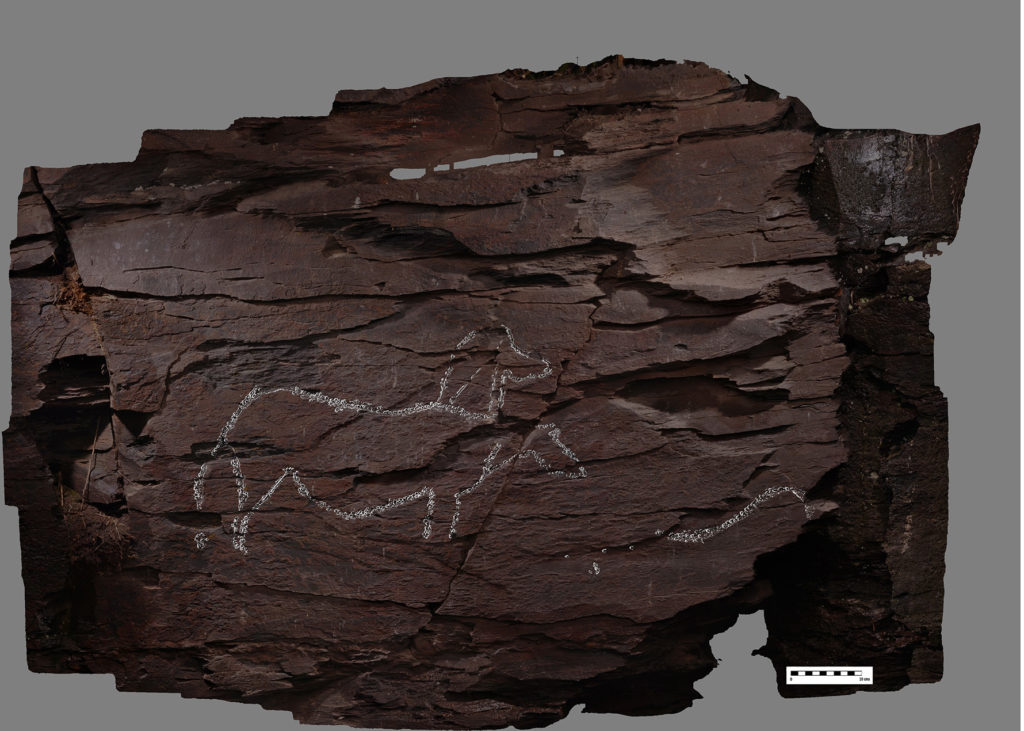 Tracing of the panel with all the motifs identified in the 2018 campaign.
Tracing of the panel with all the motifs identified in the 2018 campaign.
For more information, here is the link to the article and a link to our Sketchfab page where you can see photogrammetric models of the different panels of the site of La Salud.